
Article contents

Sole trader? Your pension is all down to you – but don’t worry, it’s not as complicated as you might think. You’ll need to open a personal pension (easy to do, we’ll show you how), and then start squirrelling money away. Your money will grow tax-free, and you’ll get a massive 25% bonus from the government on everything you add.
Working for yourself? Go you! Being your own boss can be pretty incredible – and there’s only yourself to answer to. But that means you’re responsible for your own pension too. Yikes!
But don’t fear, we’ve got you covered. Here’s everything you need to know if you’re a sole trader (working for yourself, rather than via a limited company).
And, did you know, you’ll get a massive 25% bonus from the government on everything you save into a pension? Yep. We’re not joking! It's to repay the tax you've already paid. Details below.
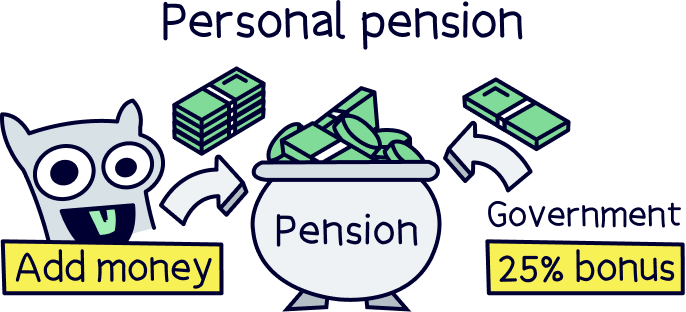
Before we run through all that, if you’re just here to get started with a pension, you’re in luck. We’ve reviewed all the best pension companies to determine the top options for sole traders, and here they are…
PensionBee comes out on top, it’s easy to set up and use, has low fees and you can pay in from a limited company.
Get £50 added to your pension



PensionBee is our recommended provider – they’ve thought of everything.
Their 5 star rated app (and website) makes it easy to set up and use. You can open a brand new pension, or transfer your existing pensions across (they’ll handle all the paperwork).
Simply pick from an easy to understand range of pension plans, and that’s it, the experts manage everything from there.
It’s low cost, with one simple annual fee. The customer service is excellent, and you’ll get a dedicated account manager for any questions you might have.

And, when the time comes to retire, withdrawing from your pension is easy too.
You can also use them if you're self-employed or a company director.



Moneyfarm is a great option for saving and investing (both ISAs and pensions). It's easy to use and their experts can help you with any questions or guidance you need.
They have one of the top performing investment records, and great socially responsible investing options too. Plus, you can save cash and get a high interest rate.
The fees are low, and reduce as you save more. Plus, the customer service is outstanding.

PensionBee comes out on top, it’s easy to set up and use, has low fees and you can pay in from a limited company.
Did we mention it’s super important to start and regularly contribute to a pension if you’re a sole trader? Because it is!
There’s no work pension to fall back on, as you’re self-employed, it’s all in your hands. But don’t fret, it’s easier than you think, and in many ways, a great thing, as you get to make all the decisions, rather than an employer (so you can pick a great pension company to use instead of being told which one).
All you need to do is set up a personal pension online, which is simply a pension that’s in your name, you decide how much to save, and when, and later on, when to withdraw. Sometimes you might hear these called self-employed pensions.
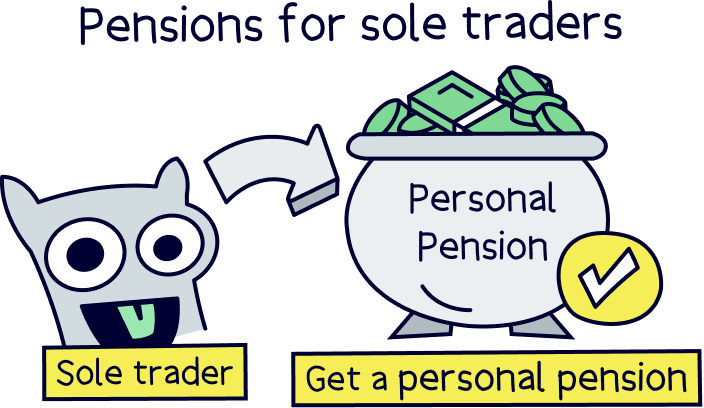
Note: a personal pension (we’ll cover the details below), is a type of private pension, so a pension ‘private’ to you, rather than the government pension (more on that below). A pension from an employer is also a private pension (but called a workplace pension).
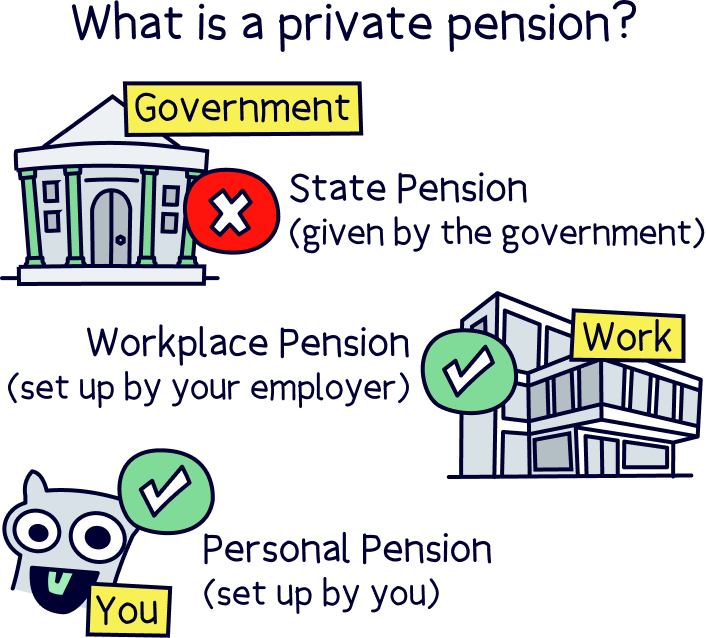
And if you weren't aware, you'll likely need a very large pension pot by the time you retire in order to give you a decent income in retirement – as much as £853,039 to provide a retirement income of £43,100 per year (classed as a comfortable retirement).
And that pension pot figure is in addition to receiving the State Pension (the government pension you get at 66 if you've paid enough National Insurance).
Sorry to panic you! But don’t fear just yet, personal pensions are pretty great at growing over time, and there’s tax benefits so your money can grow even bigger. Let’s run through all that now.
Nuts About Money tip: here’s the details on how much you’ll need to save in your pension pot.
Your only pension option as a sole trader is a personal pension, but they’re a pretty great option. In fact, we recommend employed people get one too, as a boost to their pension from work (called a workplace pension).
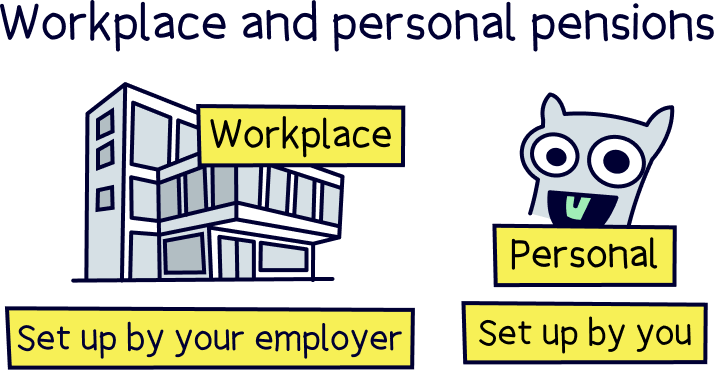
With a personal pension, you get to decide which pension company (provider) to use, so you can pick one of the best ones, and then let the experts handle things, with the aim of growing your money sensibly over time, all ready for retirement.
They’ve got some great benefits to help you save more too…
As pensions are intended to be tax-free (to save into), and you can only pay into a personal pension directly yourself (rather than from your pay like an employee), that means you have, or will, pay tax on the money you’ll add to your pension.
So, to refund this tax you’ve paid, the government will refund you 25% of everything you contribute into your pension, all automatically. Sounds good right? Technically this is called tax relief.
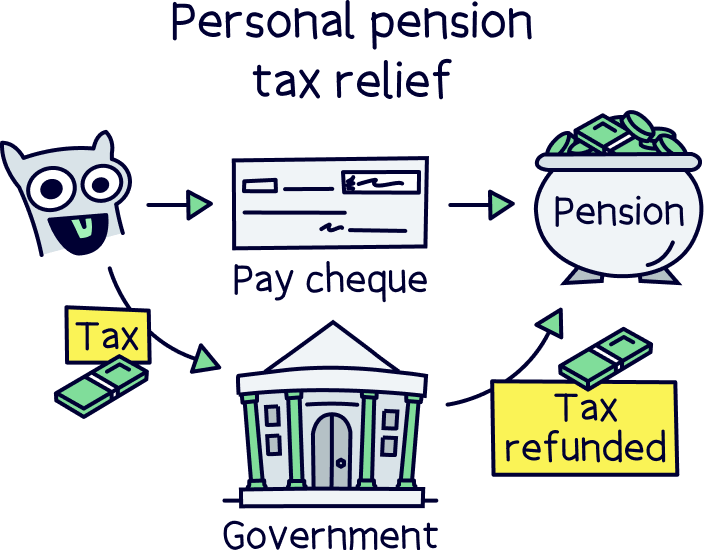
And, if you pay 40% tax (higher rate tax), or 45% tax (additional rate tax), you can claim back some of the tax paid at these rates too (on your Self Assessment tax return).
When money is inside your pension, it grows tax-free. Whoop! This means it can grow much quicker over time, as you won’t be paying tax each year, and there’s no boring paperwork to go with it (like there is with your sole trader job!).
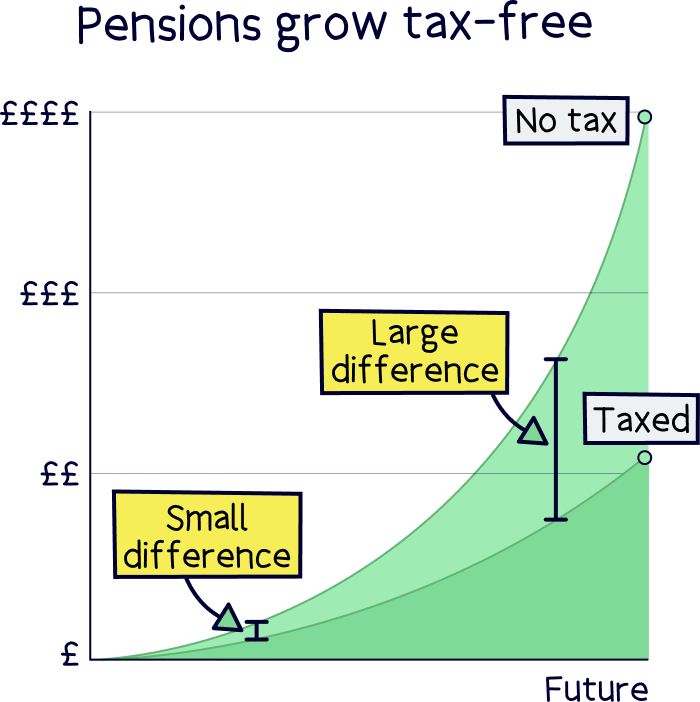
And, when it comes to withdrawing your money later down the line, 25% of it will be completely tax-free, and this can be a tax-free lump sum (all in one go), if you want to.
With the remaining 75%, you might pay Income Tax on it (the same as your income now), it depends on your income at the time.
By the way, you’ll need to be at least 55 years old (57 from 2028) to start withdrawing from your pension.
Pensions are pretty unique in the money world, and don’t count towards your ‘estate’, which is all of your money and possessions added up when you sadly pass away. Your estate is then typically used for Inheritance Tax reasons (which can be 40% on anything above £325,000).
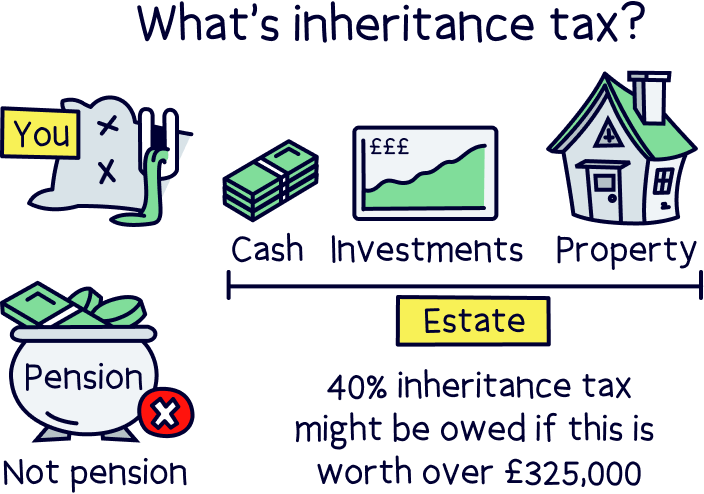
Instead, you decide who you want to receive your pension, and if you pass away before the age of 75, they won’t pay any tax at all. If you pass away over 75, they might pay Income Tax on it, depending on their income at the time, and how much they withdraw from it.
Your pension could be a form of life insurance for your family too.
Before you go putting all your money into your pension, there are some limits to be aware of…
You can only pay in as much as your total income each year (e.g. how much you earn from your sole trader job). Or, up to £60,000, depending on which is lower.
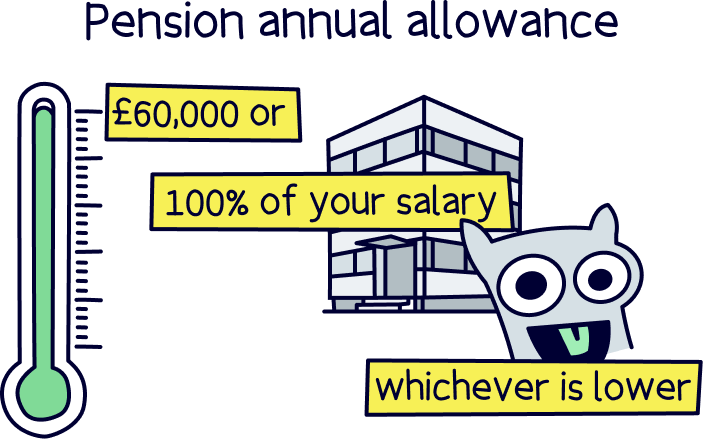
You also won’t be able to access your money until at least the age of 55 (57 from 2028) – although ideally later, so it can keep growing over time until you’re really ready to retire.
Now here’s where things get a little bit more complicated, there’s actually two different types of personal pensions. There’s a regular personal pension, where the experts handle the investments (and highly recommended for most people), and there’s a self-invested personal pension (SIPP), where you manage the investments.
These personal pensions are great as the experts will handle everything, and aim to grow your money over time (and they’re very good at it).
You’ll typically pick a pension plan from a few easy to understand options, add your money, and you’re away.
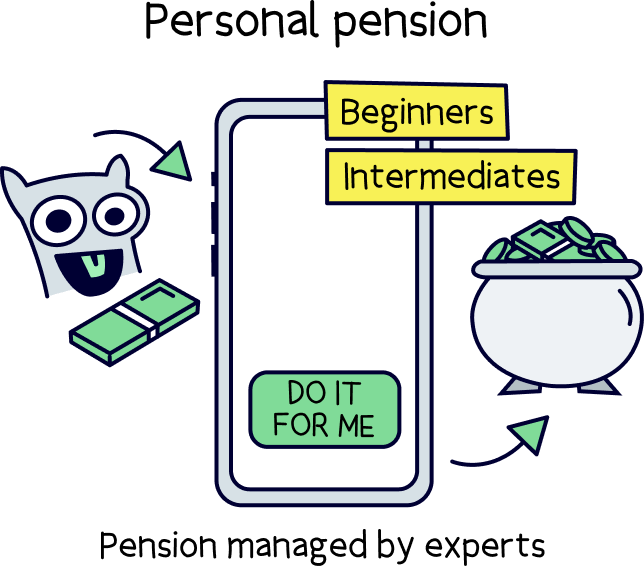
We typically recommend these for most people.
If these sound like the right option for you, and you’re not sure where to get started, check out PensionBee¹, it’s easy to use, has low fees and a great record of growing pensions over time. Plus, you’ll get £50 added to your pension for free with Nuts About Money.
With a self-invested personal pension, or SIPP, you’ll be responsible for making your own investments – so only recommended for those experienced in investing.
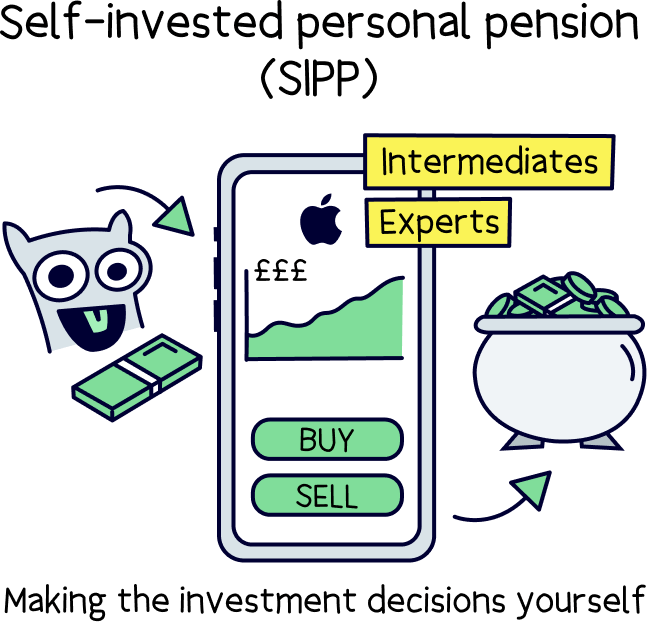
They work in exactly the same way as other personal pensions, so you’ll still get the 25% bonus from the government when you add money.
You can normally pick from a wide range of investments to put together the right investment plan for you, but it all depends on the pension provider.
If these sound interesting, learn more with our guide to the best SIPP providers.
There’s one tiny more thing to that makes it a bit more complicated, and that is that modern providers are technically SIPPs too – except that instead of making lots of your own investments, you pick from a few easy to understand pension plans managed by experts (such as our recommendations PensionBee, and Moneyfarm).
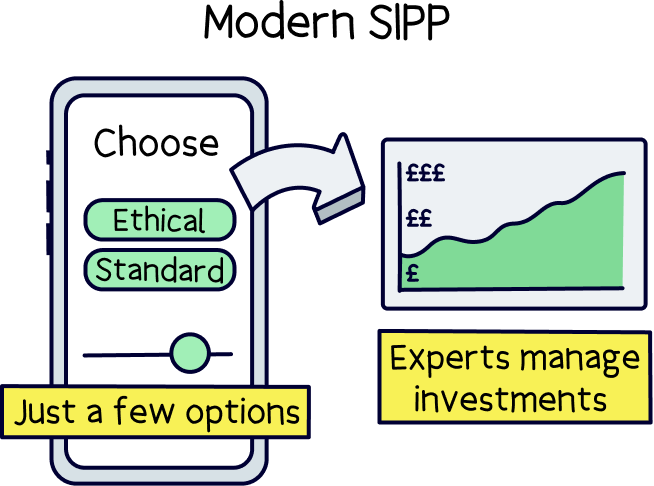
Ready to get set up with a pension then? Great, your future self will really thank you, trust us!
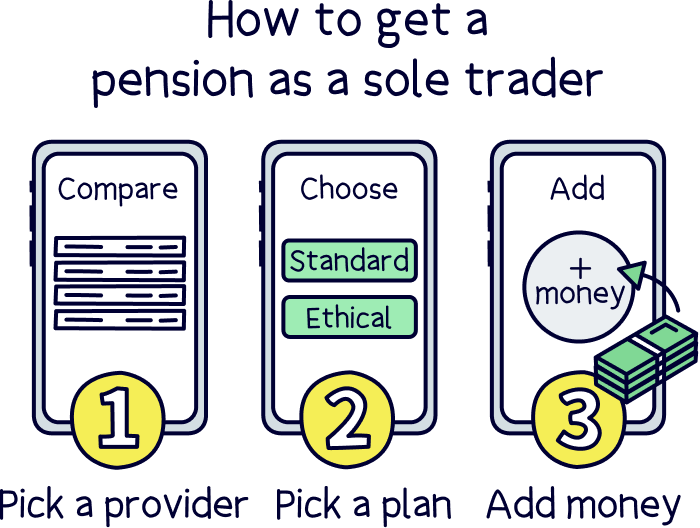
There’s only 3 easy steps to get up and running, and it can only take a few minutes too.
You’re in the right place here, we’ve done the hard work to find all the great pension providers for sole traders. All you need to do here is find one you like, and get started with them (all the best ones are online too).
Things to consider:
Our top recommendation for all those reasons is PensionBee¹, and you’ll get £50 added to your pension for free with Nuts About Money.

There’s also Moneyfarm¹, who’s great too, and can provide expert advice if you’d like it.
For all the top options, here’s the best private pensions for the self-employed.
Once you’ve decided on your pension provider, now you’ve got to pick which pension plan you’d like to save into (don’t worry, you can always change it later).
Modern pension providers will have a few easy to understand options for you to pick from, which are often simply growing money sensibly over time – but some can be more green than others, such as not investing in fossil fuel companies.
Finally, simply add your money, and you’re done.
It’s a good idea to add money straight away if you can, but also to set up a regular top up if you’re sure you’ll have money coming in regularly as a sole trader. It can really add up over time, and turn small amounts into very large pensions.
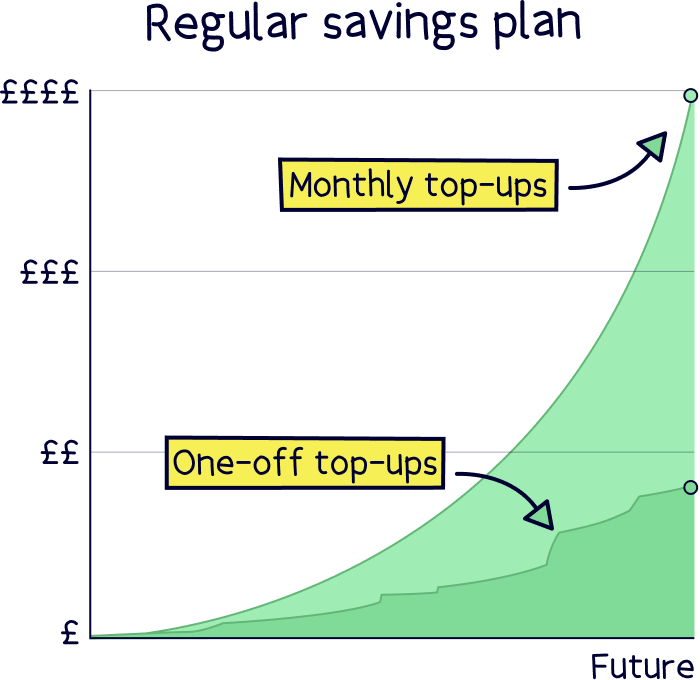
You might have a few old pensions from old jobs lying around collecting dust – which isn’t always great, you might forget where they are when the time comes to retire, and they have expensive fees (taken automatically from your savings), and not growing very much.
Well, when you sign up to a new personal pension, you can transfer these old pensions over to your new pension. This is called combining your pensions, or consolidating your pension.
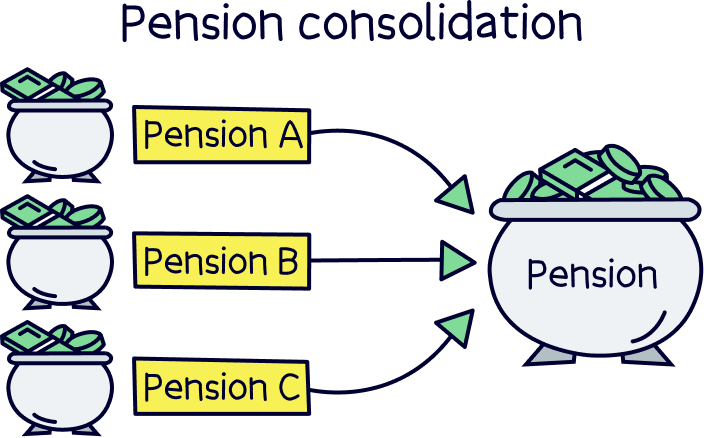
And guess what? It’s super easy to do too. In fact, your new pension provider will handle everything for you – all you need to do is let them know who your old pension provider is, and they’ll take it from there and handle all the paperwork behind the scenes. Your money will simply turn up in your account after a few weeks (sometimes a few months).
If you’re not sure where your old pensions are, try the government’s pension tracing service, or Gretel, a free service to find lost pensions.
This can be a bit depressing, as these days, you’ll need a lot in your pension pot in order to have a comfortable retirement, and for sole traders, it can be quite hard to save – but don’t worry, using a pension has lots of great benefits to help you boost your retirement savings over time, the key thing is to keep saving, and to start saving as soon as possible.
There’s 3 levels of retirement income, called the Retirement Living Standards, which are minimum, moderate and comfortable, each one a higher income than the last.
The minimum retirement standard is an income that just covers the essentials and not much more (e.g. your household bills), the moderate standard gives you a bit more to spend, and can cover a cheap holiday, and the comfortable standard, gives you well, a comfortable retirement, with more money to spend on bills and yourself (and things like a more modern car).
Wow. It’s a lot to save for retirement isn’t it? And this includes you receiving the State Pension, which is the government pension you’ll get at State Pension age (currently 66) – more on that below.
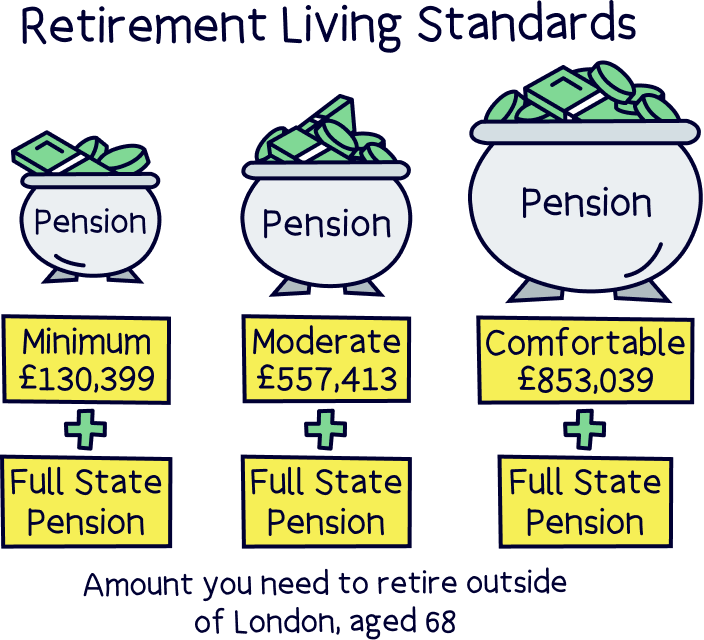
But don’t let these numbers put you off, getting started right now can really benefit your retirement, and saving into a pension has lots of benefits to help your money grow over time too.
For instance, you’ll get a massive 25% bonus from the government on everything you save into your personal pension, and your money will grow tax-free too – these things can really boost your pension pot over time.
As your money grows over time, it compounds too. This means that it can grow very large over time. It works by your money making money (growing), and the money you make also begins to make money too. This snowballs over and over, turning small amounts into very large amounts over time.
For instance, if you currently had a pension pot of £10,000, and you were able to save £220 per month, and it increased by 7% per year, after 25 years it would be worth a whopping £234,470!
And 10 years after that, it would have grown to £511,294. Just one year after that it would have grown by £35,791 in a single year.
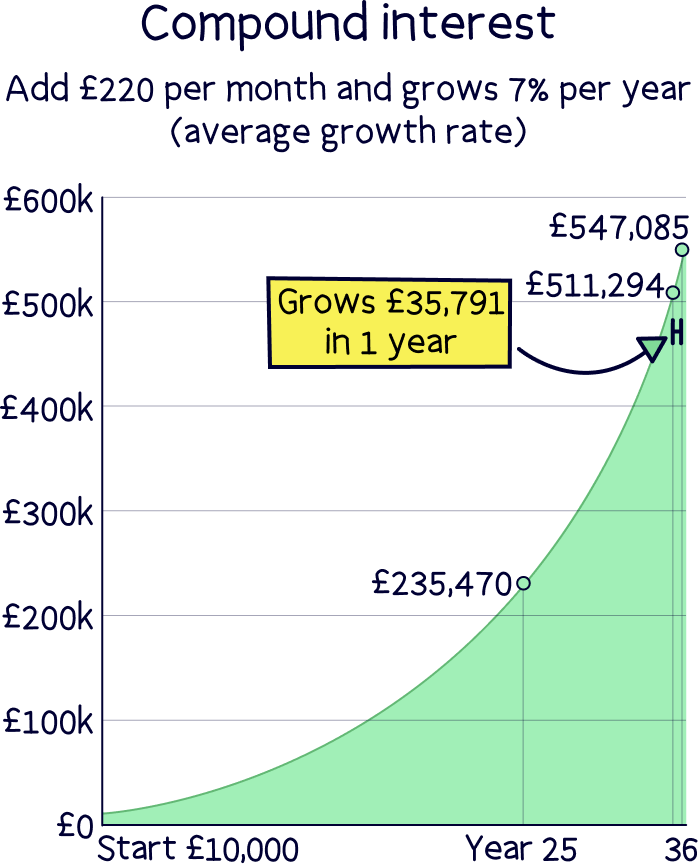
Pretty cool right? The trick is to get started as soon as you can.
As a reminder, if you’re not sure where to get started, check out PensionBee¹, it’s easy to use, has low fees and a great record of growing pensions over time.
Yep! Don’t worry, you’re still eligible for the State Pension, which is the government pension that you’ll get at State Pension age (currently 66).
However, you will need to pay at least 10 years worth of National Insurance contributions to get some, and 35 years for the full amount – so make sure you’re paying yourself enough as a sole trader to make National Insurance contributions each year.
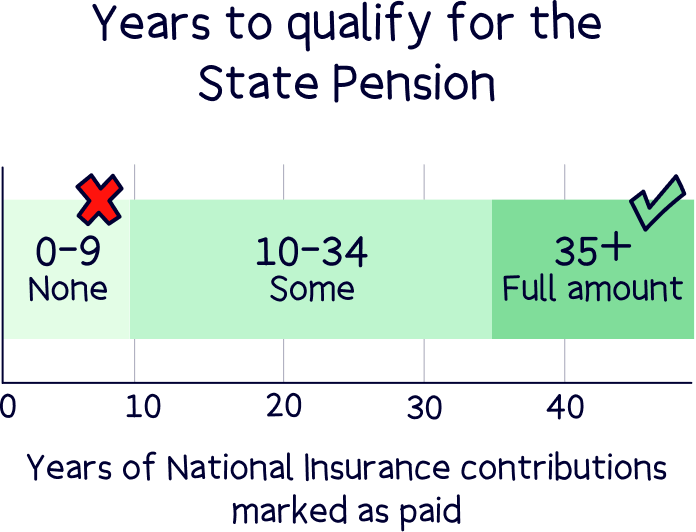
The amount you’ll get is currently £221.20 per week, or £11,502 per year, so it’s not enough to live on in retirement – you’ll almost certainly need a big private pension too.
Although you are presumably a sole trader, as your business grows you might opt to form a limited company, which makes the business its own legal entity (its own thing).
This can also have benefits for your pension too – as instead of paying into your personal pension directly from your personal bank account after you’ve been paid, you’ll actually be able to pay into your pension pot directly from your company (the company bank account), and this counts as a business expense.
And that means you’ll be able to reduce the amount of profit your company makes, and therefore pay less tax (Corporation Tax), which can be between 19% and 25% (depending on how much you make).
Pretty great right? If you’re keen to learn more about this, here’s our guide to the best pensions for limited company directors.
After you’ve (hopefully) been building a nice big pension pot over your working life, when it comes time to retire, personal pensions are pretty great too.
From the age of 55 (57 from 2028), you’ll be able to start withdrawing from your pension pot if you want to (although we recommend to keep it for as long as possible so you’ll have an even bigger pension pot).
When you withdraw money, 25% of your pension will be completely tax-free, and you can take this as a tax-free lump sum if you want to (all in one go). With the remaining 75%, you’ll have to pay Income Tax on it (the same as your income now), but it all depends on how much you withdraw at the time.
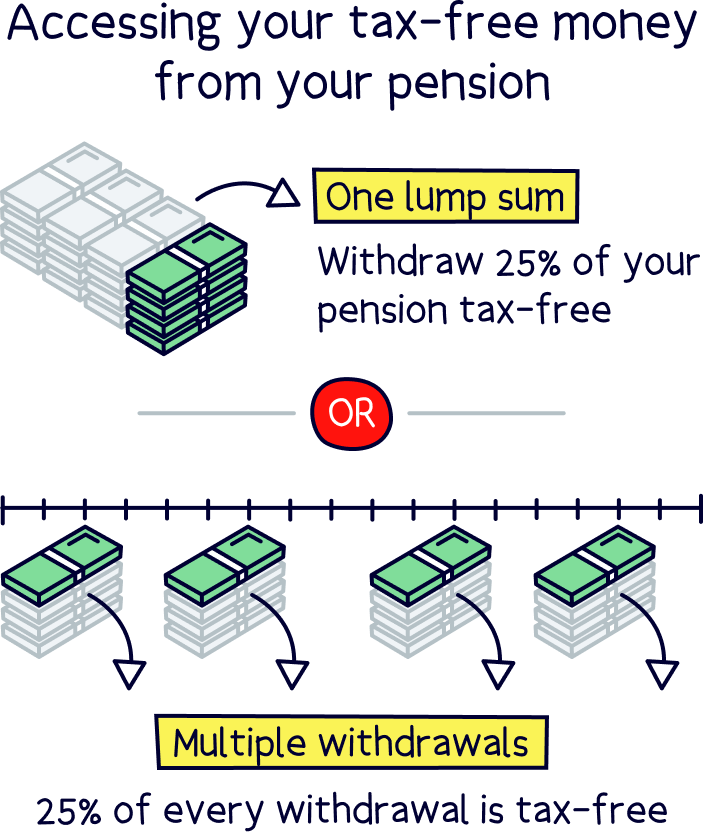
There’s two main options when it comes to actually withdrawing your money, you can either leave it where it is (in your pension pot), so it can keep growing over time, and simply withdraw from it as and when you like (such as monthly). This is called pension drawdown, and is very popular.
Or, you can opt to buy something called a pension annuity, which is a guaranteed income for the rest of your life (or a set number of years). You can either use your whole pension pot, or part of it, so you can do a combination of both if you want to. Learn more about this with our guide to drawdown vs annuity.
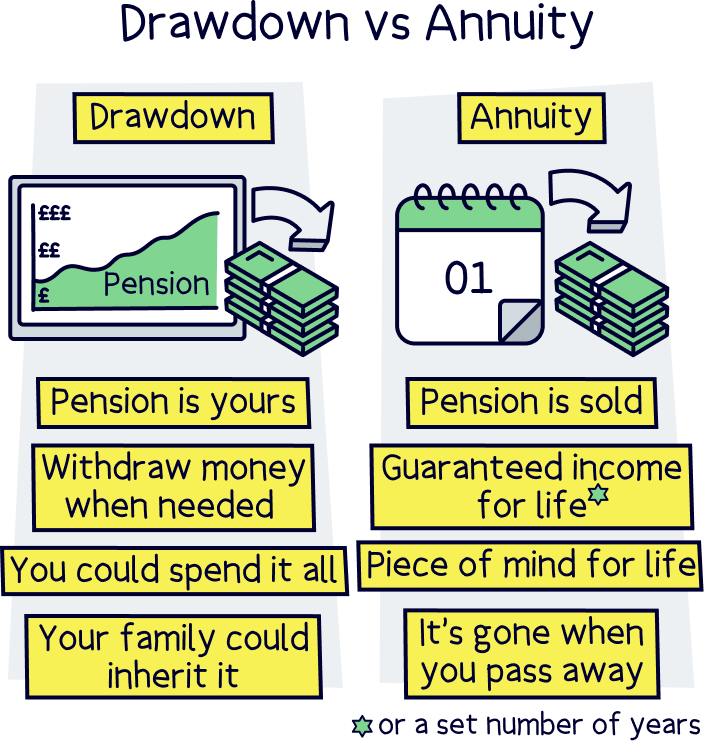
You don’t need to decide now of course, and when the time comes, it’s often a good idea to speak to a financial advisor, and you can even get free advice from a pension expert with Pension Wise (a government scheme).
We hope you’re now suitably convinced that setting up a pension is super important as a sole trader – and the sooner you start, the bigger pension pot you’ll have in retirement (and a very much needed big pension pot!).
As a recap, your best option is to open a personal pension – that’s one you can set up yourself, decide which provider to use, how much to pay, and later on when to withdraw from it.
You’ll get a massive 25% bonus from the government on all of your contributions, and can even claim tax back at 40% or 45% if you’ve paid it. Plus, your money will grow tax-free!
If you’re not sure where to get started with a personal pension, check out PensionBee¹, it’s our top rated provider. It’s easy to use, has low fees and a great record of growing pensions over time. And, we’ve managed to secure you £50 added to your pension for free when you sign up with Nuts About Money.
For all your pension options, check out the best pension providers.
Simpler than you thought right? Keep squirrelling away, and your future self will really thank you.
PensionBee comes out on top, it’s easy to set up and use, has low fees and you can pay in from a limited company.
PensionBee comes out on top, it’s easy to set up and use, has low fees and you can pay in from a limited company.
We’d love to hear from you, and it will help others too.
PensionBee comes out on top, it’s easy to set up and use, has low fees and you can pay in from a limited company.